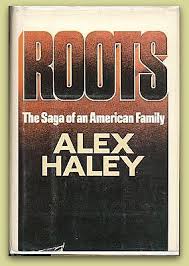Write a Memoir or Family History People Will Want to Read
Biff Barnes
If you plan to write about a person’s life – yours in a memoir or a family member’s in a family history – think about your audience before you begin. Why will anyone want to read the life story you have written?
 Few people are looking for a simple factual account of events, although attention to getting the facts right is essential, as James Frey learned when he fabricated his memoir A Million Little Pieces. Readers are interested in insight and understanding. A memoir or family history may start in individual experience, but it should go beyond the purely personal space to suggest insights and understandings readers can apply to their own lives.
Few people are looking for a simple factual account of events, although attention to getting the facts right is essential, as James Frey learned when he fabricated his memoir A Million Little Pieces. Readers are interested in insight and understanding. A memoir or family history may start in individual experience, but it should go beyond the purely personal space to suggest insights and understandings readers can apply to their own lives.
Consider the most widely read memoir and family history of the last 50 years: Frank McCourt’s Angela’s Ashes published in 1996 and Alex Haley’s fictionalized 1976 account of his family history Roots.
McCourt wrote of his story, "When I look back on my childhood I wonder how I survived at all. It was, of course, a miserable childhood: the happy childhood is hardly worth your while. Worse than the ordinary miserable childhood is the miserable Irish childhood, and worse yet is the miserable Irish Catholic childhood.”

What made the story so memorable was explained by reviewer Victoria Friedman’s in Entertainment Weekly who wrote, “… though the experience it tells of was individual, the point — and the story — is universal.”
Similarly, Haley’s story goes well beyond the personal. A Sacred Life review which appeared on the Barnes & Noble website on the book’s 30th anniversary noted that, “For many African Americans, the novel and the history-making television miniseries it begot were pivotal in their understanding and appreciation of their origins.”
What made these two works so powerful? First, they extend the reader’s vision into a different sort of experience than his own. An author working in fiction would call it world building, but in nonfiction an author must create a sense of an actual historical time and place. But beyond that both of these books help the reader to discover what is universal in the moments of time they depict. In addition, each book offers some powerful elements of personal identity – ethnic, cultural, religious or familial - with which readers can, in turn, identify and explore the values that identity represents. Finally, in depicting how different people think, believe and feel, these stories offer lessons readers may find useful in coping with the challenges presented by their own lives.
I recall that sometimes during my years teaching history a student would say, “So what?” A memoir or family history reader might well do the same when you finish recounting the facts unless you have a compelling answer.